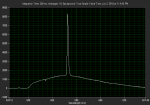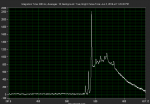Here now as desired and promised the description of the featured longpass-filter-holder with collimator and SMA905 connection.
Essentially, I designed and built this part to connect a spectroscope to a microscope.
Of course, this structure is only an example, as each of you has different components available.
As a base I needed a housing, since the filter has a diameter of 25 mm, I took this of a 1.25 inch eyepiece, which can be disassembled as far as possible.
Mine belonged to a russian stereoscopic light microscope MBS-10, from time to time you can find such a one on ebay, like e.g. here:
link:
https://www.ebay.de/itm/14x-Okular-...424887?hash=item285b2ddfb7:g:D4cAAOSwJRZaZeyF
There are 4 grub screws on the upper lens holder.
This can be removed for easier integration of parts.
Inside the upper lens frame sits a ring nut.
Since I have no such tool, I have this ring nut turned out with a scissors.
Of these three parts I only need the black top lens holder.
From the known beam splitter, I have taken the SMA905 collimator after loosening the small grub screw.
The SMA905 collinator should now be insalled in this lens frame.
I have drilled these on both sides with a countersink until the thread of the SMA905 collominator can be screwed in.
I then screwed in the SMA905 collominator only provisionally. Since I have no fine thread nut, it was only at the shot, after the total assembly (if everything fits) it was fixed with adhesive.
Now the eyepiece cylinder is disassembled, also here I unscrewed the lock nut with a scissors from below.
The entire lens package is dumped, only the glass lenses are no longer needed, the rest is in use.
I especially used these two aluminum rings. In the cylindrical the 25 mm long pass filter fits exactly into it and thus serves as a spacer ring to the cylinder.
Instead of the stack of lentils, I have now put together different items. Lock nut, rubber seal as damping and distance, filter in the spacer ring just mentioned, seal, 2nd distance ring with seal.
This construction is not high enough as a stack, because the internal thread for the locknut does not stick out far enough.
So I put on top a 20 mm pipe-extension with matching diameter.
I had previously drilled this tube extension to fit inside as a guide, so that the lens sleeve of the SMA905 collominator fits into it.
After all, hopefully everything fits, the upper lens holder is screwed back firmly and NOW the SMA905 collominator fixed with adhesive from above.
DONE and working ...





































